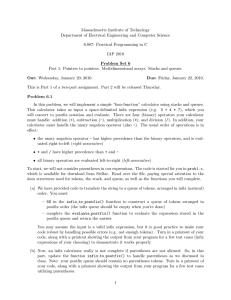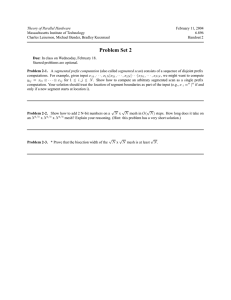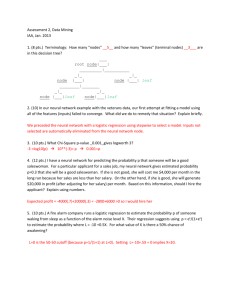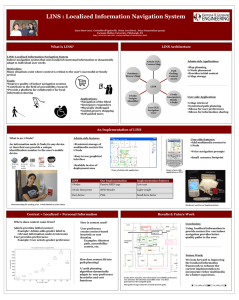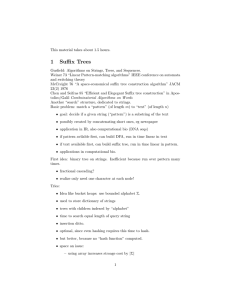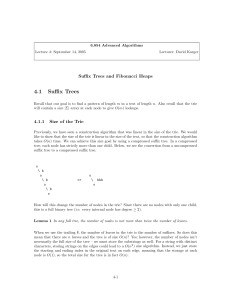A Multi-index Hybrid Trie for IP Lookup and Updates
advertisement
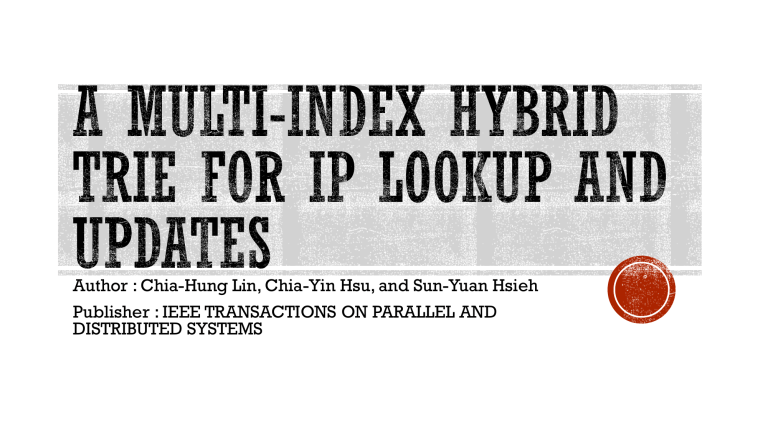
Author : Chia-Hung Lin, Chia-Yin Hsu, and Sun-Yuan Hsieh Publisher : IEEE TRANSACTIONS ON PARALLEL AND DISTRIBUTED SYSTEMS To reduce the time required by router table operations, this study developed a novel data structure, the multi-index hybrid trie (MIHT), which combines the best features of the B +tree and priority trie to design dynamic router tables. The proposed data structure preserves the advantages of the B + tree and the triebased data structure and avoids the mentioned shortcomings. 主要架構以B+ tree 為主 在配上priority tries 下面是這邊用到的B+ tree的特性 Each node has at most m children. Each node, except the root, has at least m/2 children. The root has at least 2 children. All leaves occur on the same level. For a B + tree, stores all the satellite information in the leaves and stores only keys and child pointers in the internal nodes. 這邊的key 寄上一頁的 在他的架構裡面長度不到k的prefix 都放在另外的priority trie : PT[-1] 一個(k,m)MIHT 表示key 值為k 且其b+ tree order為m 分為三種node : root, i-node(index node), d-node(data node) The root is a pointer array with a size of two, root[0] points to the root of PT[−1] and root[1] points to the root of Tb. 又分為兩種 : internal i-node 與external i-node 包含以下欄位 Leaf(u) : indicating whether u is a leaf. For the internal i-node u, leaf(u) is set as FALSE. t(u):裡面有幾個index t(u)個index :I1 (u), I2 (u), . . . , It(u) (u) t(u)+個child-pointers Each d-node w had the following fields: priority(w) recorded the boolean value, indicating whether w is a priority node. s(w) is the suffix stored in w. 所以如果有match output port就是找 prefix Ii (v) · s(w). left(w) right(w) 若len < k 去PT[-1] delete掉 若len=>k 則trace到 d-node中的該prefix delete掉他 若delete後 該priority trie不為空,做 priority trie的調整 若為空delete掉 external i-node的對應index與pointer 並依照b+ tree的條件去做調整 對prefix先取a bit依照這個key分成多個MIHT 注意a值不可小魚最短的prefix lenth 否則會有duplicate For example, assuming that p =101000* and α = 8 (the first eight bits of a prefix represent the index value), because 101000* contains (10100000) 2 = 160, (10100001) 2 = 161, (10100010) 2 = 162, and (10100011) 2 = 163, p must be inserted into the (k, m)-MIHTs, as indicated by P[160], P[161], P[162], and P[163] The experiments were performed using C language for four benchmark IPv4 and two benchmark IPv6 prefix databases obtained from [1], . The codes were run on a 3.40GHz Pentium 4 PC that had 1.99GB of memory.

